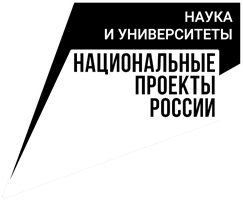Organizing Committee
- Huijun Fan (SMS PKU)
symplectic geometry and mathematical physics, geometric analysis - Sergey Gorchinskiy (MI RAS)
algebra and geometry: algebraic geometry, K-theory - Hailiang Li (SMS CNU)
fluid mechanics, partial differential equations, analysis - Jinsong Liu (AMSS)
algebraic geometry: singularity theory - Yi Liu (BICMR)
Topology of 3-manifolds, hyperbolic geometry - Denis Osipov (MI RAS)
algebraic geometry, number theory, integrable system - Ye Tian (UCAS, AMSS)
Number Theory, Arithmetic Geometry, Iwasawa Theory - Alexey Tuzhilin (MSU)
geometry: Riemannian and metric geometry - Yue Yang (CE PKU)
computation mathematics and mechanics - Ping Zhang (AMSS)
P. D. E.: fluid equation and semi-classical analysis - Alexander Zheglov (MSU)
geometry: algebraic geometry, integrable system
PROGRAM
11:00 (GMT+3)
| Xin Yi Peking University |
|
|
Bio: Xin Yi received his B.E. and M.S. degrees from Peking University in 2005 and 2008, respectively, and his Ph.D. degree in Engineering Science at Brown University in 2014. He joined the faculty of Peking University in 2016 and was promoted to Associate Professor with tenure in 2023. His research is dedicated to advancing fundamental understanding of complex mechanical behaviors in materials, spanning both biological and engineering systems. His current focus involves investigating the interaction between cells and nanomaterials, as well as exploring the mechanics of nanostructured metals. |
|
Morphological transformations of vesicles with confined filaments.
Packing of elastic filaments, encompassing cytoskeletal microtubules, actin filaments, and artificial nanotubes, is fundamental to understanding a wide range of cellular functions and their applications in cellular engineering. Through theoretical analysis, we examine the packing of open or closed filaments within vesicles, unveiling how the stiffness and size ratios between filaments and vesicles lead to transitions in vesicle configurations, inducing filament bending or coiling. Morphological phase diagrams are established to elucidate these shifts. These findings shed light on the understanding of cell morphology, cellular stability, and the construction of artificial cells in biomedical and engineering contexts.
12:00 (GMT+3)
| Andrey Afanasyev Moscow State University |
|
|
Bio: Afanasyev Andrey Aleksandrovich graduated from the Faculty of Mechanics and Mathematics of Moscow State University in 2006. He is a Professor of the Department of Fluid Mechanics since 2021. Besides, he is a Leading researcher and a Chairman of the Council of Young Scientists of the Research Institute of Mechanics of Moscow State University since 2010, and a Corresponding Member of the Russian Academy of Sciences since 2022. Area of scientific interests: fluid and gas mechanics, flows in porous media, multiphase filtration. He developed and applied new methods for mathematical modeling of multiphase non-isothermal flows of liquids and gases in geological formations, complicated by phase transformations, critical thermodynamic conditions and the formation of strong discontinuities in flow parameters. Created a set of computer programs MUFITS for calculating complex multiphase filtration flows in engineering applications, such as the development of hydrocarbon fields, underground gas storage, geothermal energy production, etc. He was awarded the Moscow Government Prize for Young Scientists (2016), the RAS Medal with a Prize for Young Scientists (2011), and the Prize of the International Academic Publishing Company “Science/Interperiodica” for the best publication in RAS journals (2007). |
|
Reservoir simulation of carbon dioxide storage in saline aquifers. from small to large scales.
In the laboratory of General hydrodynamics, we conduct investigation into multicomponent multiphase flows in porous media associated with the injection of carbon dioxide (CO2) into permeable geological formations. In the view of the growing attention to the problem of climate changes and the discussion of low-carbon development strategies for Russia, modeling such flows is in demand. We have developed advanced methods of reservoir simulations of such flows and now apply these methods in fundamental and applied research of CO2 storage in saline aquifers and petroleum reservoirs. Self-similar problems describing the processes in the bottom-hole zone of a CO2 injection well has been solved. A simple relationship for the skin factor of a gas well caused by the deposition of salts during evaporation of water is explicitly obtained. For the later stages of CO2 injection, similarity criteria characterizing the maximum distance of gas propagation from the well in an inclined aquifer have been determined. It is shown that the size of the formation area contaminated with gas depends on only two similarity parameters. A significant attention is now given to construction of effective (subgrid) models of convective mixing underneath the CO2 plume. The prospects of pumping supercritical CO2 and multicomponent flue gases into underground natural gas storage facilities to increase the efficiency of operation of such facilities is investigated. The prospects of carbon dioxide storage in aquifers of West Siberia are investigated. The depositional environments most suitable for CO2 sequestration are estimated. Today, these results are being implemented in the scientific and technical centers of Russian oil companies.
The meeting will be held in the form of a webinar on the Voov platform.
1) Download VOOV from here https://voovmeeting.com/mobile/downloadindex.html
2) Install it and register in it naturally (registration by e-mail).
3) However, if you have some difficulties, please, consult to https://zhuanlan.zhihu.com/p/589899174?utm_id=0
To Join Tencent Meeting:https://meeting.tencent.com/dm/Iu5M179e8w0A
Meeting ID:498-2712-5392
Password:654321

